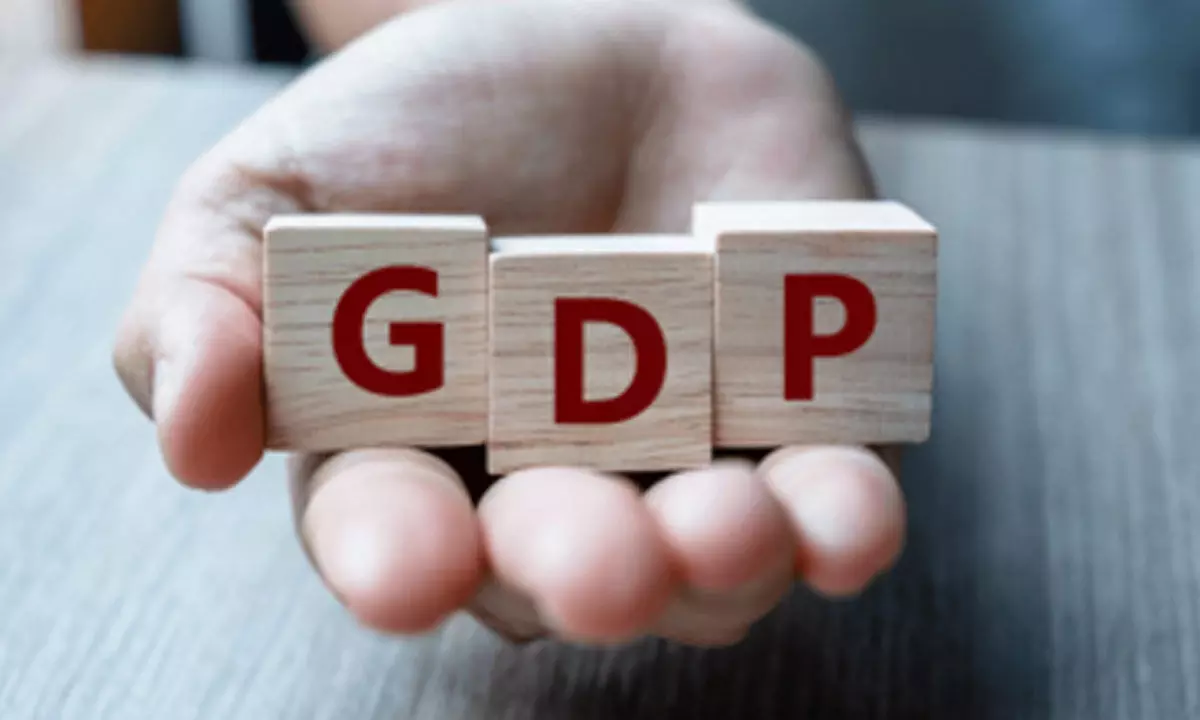Limited risk of fiscal slippage point at 5.9% GDP growth
Many analysts expect limited risks of fiscal slippage in the current fiscal, which, they estimate, could lead to GFD/GDP growth at 5.9 per cent. The Centre’s fiscal deficit remained under control in Q1 at 25 per cent of the current fiscal’s estimate. Although corporate tax collections remain weak, the receipts were buoyed by CGST and personal income tax. Expenditure remained well-supported by capital expenditure in railways and roadways, even as revenue expenditure is under tight control. GST collections for June were 10.8 per cent higher yoy at Rs 1,651 bn as against Rs 1,615 bn in May, with CGST at Rs 298 bn (Rs 310 bn), SGST at Rs 376 bn (Rs 383 bn), IGST at Rs 859 bn (Rs 803 bn) and the compensation cess at Rs 118 bn from Rs 119 bn in May. After the distribution of IGST, June CGST and SGST revenues (before refunds) were at Rs 696 bn and Rs 708 bn, respectively. CGST plus IGST collections are currently at a monthly run-rate of Rs 663 bn in Q1, with the required run-rate at Rs 683 bn.
image for illustrative purpose

Many analysts expect limited risks of fiscal slippage in the current fiscal, which, they estimate, could lead to GFD/GDP growth at 5.9 per cent. The Centre’s fiscal deficit remained under control in Q1 at 25 per cent of the current fiscal’s estimate. Although corporate tax collections remain weak, the receipts were buoyed by CGST and personal income tax. Expenditure remained well-supported by capital expenditure in railways and roadways, even as revenue expenditure is under tight control. GST collections for June were 10.8 per cent higher yoy at Rs 1,651 bn as against Rs 1,615 bn in May, with CGST at Rs 298 bn (Rs 310 bn), SGST at Rs 376 bn (Rs 383 bn), IGST at Rs 859 bn (Rs 803 bn) and the compensation cess at Rs 118 bn from Rs 119 bn in May. After the distribution of IGST, June CGST and SGST revenues (before refunds) were at Rs 696 bn and Rs 708 bn, respectively. CGST plus IGST collections are currently at a monthly run-rate of Rs 663 bn in Q1, with the required run-rate at Rs 683 bn.
Gross tax revenue in Q1 was 20 per cent of the fiscal’s estimate at 3.3 per cent higher than a year-ago and net tax revenue was 18.6 per cent of the estimate at 14 per cent lower than the year-ago period. The total receipts were at 22 per cent of the estimate at 0.5 per cent higher than the year-ago period, led by non-tax revenues, mostly due to RBI dividends, at 51 per cent of the current fiscal’s Budget. On the tax front, CGST plus GST collections were at 25 per cent of the estimate at 11.4 per cent higher than Q1 and personal income tax was at 22 per cent of the year’s estimate. Corporate tax and excise duty collections in Q1 were at a mere 15 per cent of the fiscal’s estimate. Direct tax was at 18.3 per cent of the estimate and indirect tax was at 22 per cent of the estimate, showing a growth of 9 per cent.
Expenditure in Q1 was at 23 per cent of the year’s estimate. This was propped up by capital expenditure at 28 per cent of the estimate, reflecting a growth of 59 per cent higher than the year-ago period. This was continued to be supported by roads at 39 per cent of the fiscal’s estimate, which was 23 per cent higher than the year-ago period and railways at 33 per cent of the estimate. Kotak sees a limited slippage risk in the current fiscal estimates. Though higher-than-budgeted RBI surplus transfer provides a significant buffer, it could be offset by a divestment shortfall and downside risks to tax receipts. There may be some weakness in corporate tax collections and there also lies the risk of higher spending, given the busy election cycle. One can expect GFD/GDP estimate at 5.9 per cent vis-à-vis the year’s estimate.


